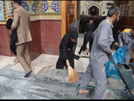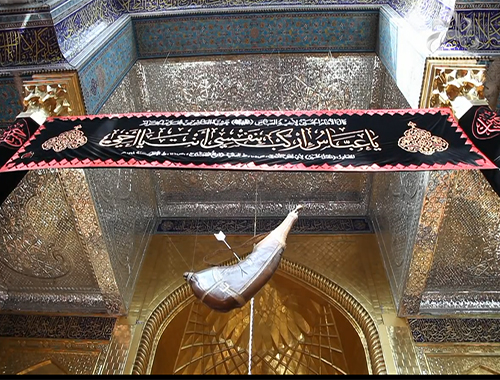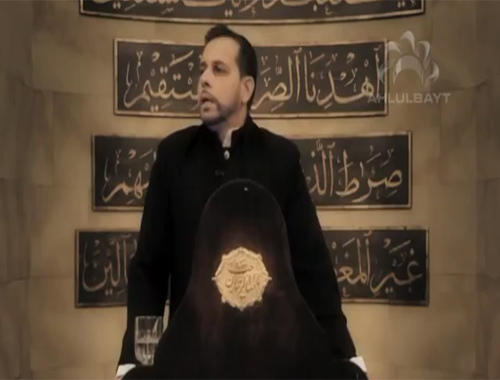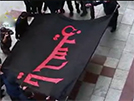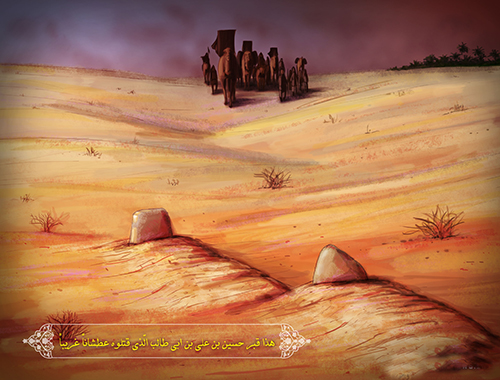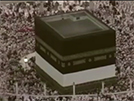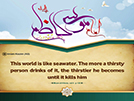Chapter 3-Books on the History of the Prophets
- Details
- Hits: 2436
Chapter 3
Books on the History of the Prophets
--------------------------------------------------------------------------------
Accounts of the divine Prophets were carried out as part of Islamic historiography by various scholars in books entitled al-Mubtada’ which means the beginning or the origin. These works deal with the history of mankind since the beginning or the creation of Adam till the time of the last divine messenger, Prophet Muhammad (S). In this field also the Shi‘ites did not lag behind. Part of the book al-Mubtada’ wa al-Mab‘ath wa al-MaghÄzÄ« by AbÄn bin ‘UthmÄn Ahmar BajallÄ«, the extant portions of which we have published as mentioned earlier in this article, indicates that the recording of such traditions also existed among the Shi‘ites, although, as we have said in the introduction to this book, it contains certain narrations from Israelite sources, which are of course not acceptable.
Among Shi‘ite sources, the section dedicated to the history of the Prophets is found scattered and sometimes in detail. ‘AllÄmah MajlisÄ« has mentioned these narrations in volumes 11 to 14 of BihÄr al-AnwÄr. Most of these are found in the works Shaykh Saduq, in TafsÄ«r ‘AlÄ« bin IbrÄhÄ«m QummÄ«, in TafsÄ«r al-‘AyyÄshÄ«, TafsÄ«r Majma‘ al-BayÄn and similar books, and as we said, these narrations have been borrowed from the Sunnis who related from such persons as Ka‘b al-AhbÄr, ‘AbdullÄh bin SalÄm, and especially Wahab bin Minbah. Ibn TÄwus has quoted an excerpt in Faraj al Mahmum from a book entitled Qasas al- AnbiyÄ’ which he considers was written by Muhammad bin KhÄlid bin ‘Abd al-RahmÄn al-BarqÄ«.[22] But apparently, no one else among the ImÄmÄ« bibliographers have mentioned this book. However, from among the books exclusively written on the history of Prophets, reference can be made to the Qasas al-AnbiyÄ’ of Qutb al-DÄ«n al-RÄwandÄ«, which has been published by the Foundation for Islamic Research by Professor GhulÄm RizÄ ‘IrfÄniyÄn. This work, in addition to being the history of Prophets, has a section that includes their miracles (chapter 19, p. 280 onwards), while chapter 20 deals in brief with the life of Prophet Muhammad (S). The author has not mentioned his sources for the accounts of the Prophets and most of the chain of narrators which he has mentioned do not clearly indicate the source. It is likely that a major part of Chapter 20 is based on TafsÄ«r ‘AlÄ« bin IbrÄhÄ«m QummÄ«.
After al-RÄwandÄ«’s work, the book al-Nur al-MubÄ«n fÄ« Qasas al-AnbiyÄ’ by Sayyid Ni‘matullÄh al-JazÄ’irÄ« (d. 1112 AH) deals elaborately with the history of Prophets.
Part of the historical books of the Shi‘ites is those which have been written to record the miracles performed by the Infallible Imams (‘a) in proof of their Imamate. Naturally in these works different aspects of the lives of the Imams (‘a) have also been recorded. Among the most ancient books in this regard is the DalÄ’il al-A’immah by Muhammad bin Mas‘ud ‘AyyÄshÄ« the Shi‘ite scholar of the late 3rd and early 4th centuries who lived in Samarqand. His works, including this one, have been mentioned by Ibn NadÄ«m.[23] This book however has not survived and is presumed to be lost. Another work in this field is al-DalÄ’il wa al-Mu‘jizÄt by AbÄ« al-QÄsim KufÄ« who is accused of exaggeration. He has also written a book on this subject titled TathbÄ«t Nubuwwah al-AnbiyÄ’.[24]
Here, mention could also be made of DalÄ’il al-NabÄ« (S) written by Ahmad bin YahyÄ bin HakÄ«m ‘Uday SufÄ« al-KufÄ«,[25] and al-IhtijÄj li Nubuwwah al-NabÄ« (S) by IsmÄ‘Ä«l bin ‘AlÄ« bin IshÄq bin AbÄ« Sahl bin Nawbakht.[26] Two books with the same title KitÄb al-DalÄ’il, have also been written by Abu al-‘AbbÄs ‘AbdullÄh bin Ja‘far HimyarÄ« and Abu ‘AbdullÄh Muhammad bin IbrÄhÄ«m bin Ja‘far al-Nu‘mÄnÄ«.[27]
Abu Muhammad ‘Abd al-BÄqÄ« bin Muhammad al-BasrÄ«, a Shi‘ite ‘Älim of the 6th century is the author of the book entitled DalÄ’il, and another book entitled al-Hujaj wa al-BarÄhÄ«n fÄ« ImÄmah AmÄ«r al-Mu’minÄ«n wa AwlÄdih al-Ahad ‘Ashar A’immah al-DÄ«n SalawÄt Allah wa SalÄmuhu ‘Alayhim Ajma‘Ä«n.[28] Another book that has been published is DalÄ’il al-ImÄmah by Muhammad bin JarÄ«r TabarÄ«, a contemporary of Shaykh TusÄ«. Although al-KharÄ’ij wa al-JarÄ’ih by Qutb al-DÄ«n al-RÄwandÄ« elaborates in detail on the miracles of the Prophet and Imams, the author has unfortunately not mentioned his sources. This book has been summarised and translated under the title KifÄyah al-Mu’minÄ«n. The Arabic version of al-KharÄ’ij has been published in 3 volumes with the efforts of the Imam al-MahdÄ« (‘a) Foundation.
Another early Shi‘ite work at hand is the book al-ThÄqib fÄ« al-ManÄqib by Abu Ja‘far Muhammad bin ‘AlÄ«, known as Ibn Hamzah (d. after 552). This book contains narrations on the miracles of several Prophets, including Prophet Muhammad (S), as well as the miracles of Hazrat FÄtimah and the Imams (‘a). One of the sources of this work is MafÄkhir al-RizÄ (‘a) by HÄkim NayshÄburÄ«.
Sunni scholars have also written books on this subject such as DalÄ’il al-Nubuwwah which is the title used by both BayhaqÄ« and Abu Na‘Ä«m IsfahanÄ« for their works. The book TathbÄ«t DalÄ’il al-Nubuwwah by QÄzÄ« ‘Abd al-Jabbar HamdÄnÄ« also follows this method, except that it has presented the discussion in kalÄmÄ« or theological form.
Notes:
[22] Kohlberg, Etan, A Medieval Muslim Scholar at Work - Ibn TÄwus & his Library, pp. 308, 309.
[23] Ibn Nadim, al-Fihrist, p. 245.
[24] Al-NajÄshÄ«, al-RijÄl, p. 266.
[25] Ibid, p. 81.
[26] Ibid, p. 32.
[27] Kohlberg, Etan, A Medieval Muslim Scholar at Work - Ibn TÄwus & His Library, pp. 138, 139; ArbilÄ« has also quoted extensively from HimyarÄ«’s DalÄ’il, refer to ‘AlÄ« bin ‘IsÄ ArbilÄ« and Kashf al-Ghummah, p. 109.
[28] Muntajab al-DÄ«n, al-Fihrist, p. 76.

